Barberry Thunberg "Atropurpurea": description, planting and care
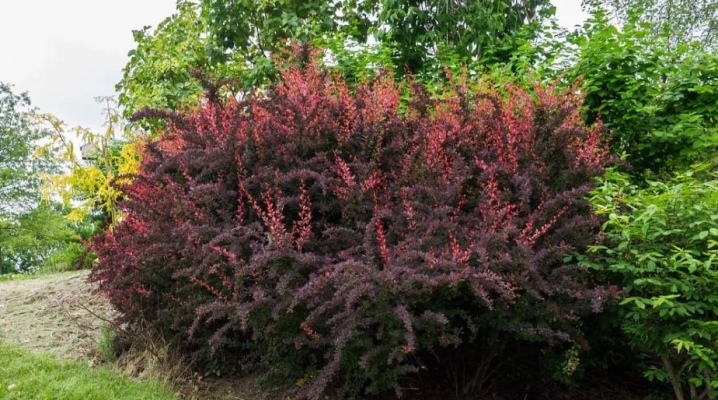
Barberry Thunberg "Atropurpurea" has inedible fruits and a short flowering period, but is still loved by gardeners. The owners of the plots are attracted primarily by the unpretentiousness of the culture and the neat forms of the growing shrubs.

Peculiarities
Barberry Thunberg "Atropurpurea" is grown either for decorative purposes or for the formation of a hedge. Although the fruits of this variety are forbidden to be eaten, their appearance still contributes to the creation of aesthetic appearance. Description Berberis thunbergii Atropurpurea should start with the fact that the height of the bush is 2 meters, and the width reaches about 3.5 meters. By the way, the red shade of the barberry leaf, changing from purple to bright red, explains its popular name - red-leaved barberry. If the culture is grown in the shade, then the decorative effect of the leaf is disturbed due to the resulting green spots.
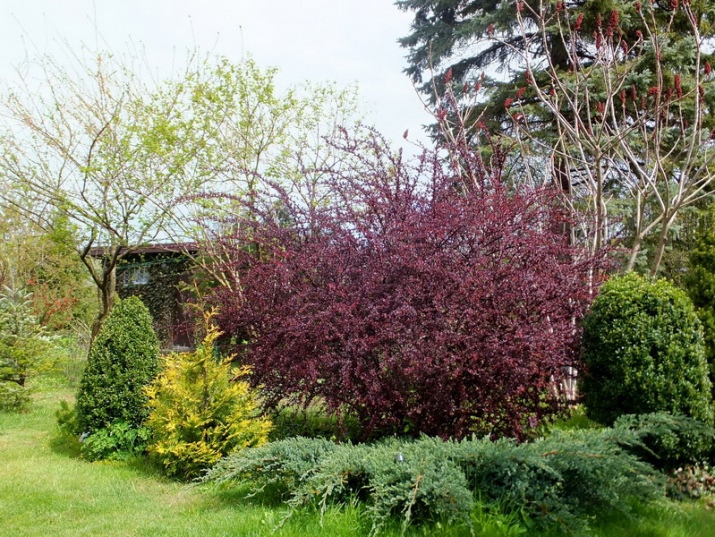
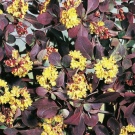
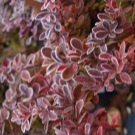
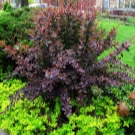
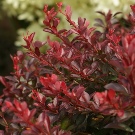
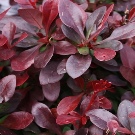
Flowering "Atropurpurea" occurs in May and lasts 2-3 weeks. Opened round buds reach only one centimeter and form racemose inflorescences of 3-6 specimens. The petals are colored bright yellow on the inside and purple on the outside. The crown has a spherical shape due to the presence of a large number of thin side shoots. The plant grows 20-30 centimeters a year, increasing not only in height, but also in width. The oblong fruits have a bright coral color.
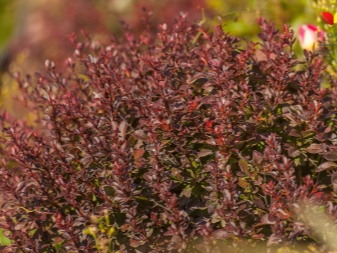
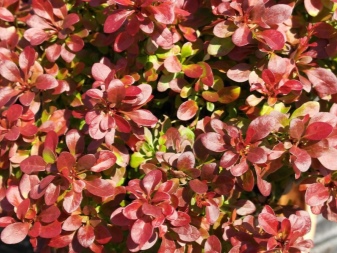

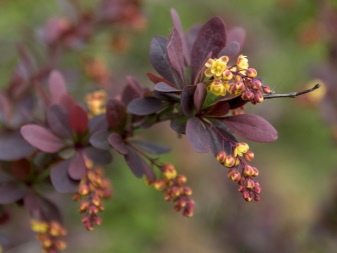
Barberry Thunberg is able to exist from 50 to 60 years. It can be grown in any area, including those with cold winters. Dry or waterlogged soil can become the main obstacle to the successful development of culture.
How to plant?
When planting, you must follow a few basic rules.
- The location is determined in such a way that the site is well lit throughout the day. Even short-term exposure to the shade leads to a change in the quality characteristics of the culture.
- Excess moisture can be extremely negative for barberry "Atropurpurea", therefore it is important to avoid lowlands and areas with a high groundwater table.
- The distance between plants should be sufficient, as the barberry is prone to overgrowth. Naturally, in the case of the formation of a hedge, the seedlings are grown closer.
- In the event that a spring planting is to be done, the soil should be prepared in the fall. If the crop is planted in the fall months, preparation begins in about 4 weeks.
- It is important to avoid high acidity, therefore, if this parameter is violated, lime or dolomite flour is added to the soil. Loam and black soil are lightened by using peat and sand.
- The size of the dug hole is determined depending on the age and size of the plant. When planting seedlings under two years old, a width and depth of 25 and 30 centimeters will be sufficient. When a bush is transplanted over three years old, it will be necessary to dig a hole, the diameter and depth of which are 50 centimeters.
- If the Thunberg barberry "Atropurpurea" is to be part of a hedge, then it will be necessary to dig a trench, the width and depth of which will be 40 centimeters.
- While the hole is being created, the top fertile soil layer will need to be mixed with a couple of buckets of sand, with a couple of buckets of compost and 100 grams of superphosphate. The resulting hole is moistened and then a seedling is placed in it.
- Each seedling should already have a well-developed root system, which is freed from dried and damaged pieces. Care should be taken to ensure that there are four or more appendages covered with smooth reddish-yellow bark.
- It will be important to disinfect the shoots with fungicides, as well as stimulate the seedling in a special solution.
- The seedling in the hole is installed vertically, and its roots must be straightened. Having covered the planting with soil mixture, it is necessary to make sure that the root collar rises at a level of 5 centimeters from the surface. However, if in the future the bush will undergo division, experts recommend deepening the root collar.
- Planting ends with irrigation and mulching of the trunk circle. If the planting takes place in the spring, then it is better to use organic matter as mulch, and if in the fall, then straw or dried foliage. All work is recommended to be carried out in the morning before sunrise or in the evening after sunset.
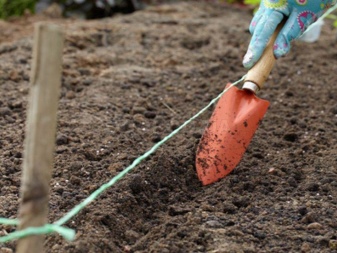
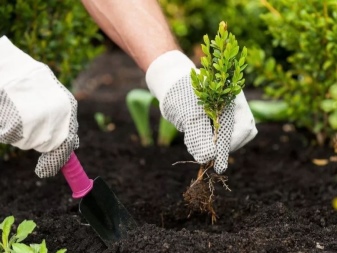

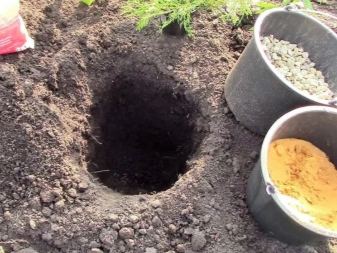
It is possible to propagate barberry "Atropurpurea" by seed method, but the process will be very delayed. First, in the autumn, seeds are extracted from the fruits, which are kept in a manganese solution for about 40 minutes. After drying the material, it can be immediately sent to the garden. The next year, after the appearance of a couple of leaves in the barberry, it will have to dive. Culture is transferred to a permanent habitat only in the third year of life.
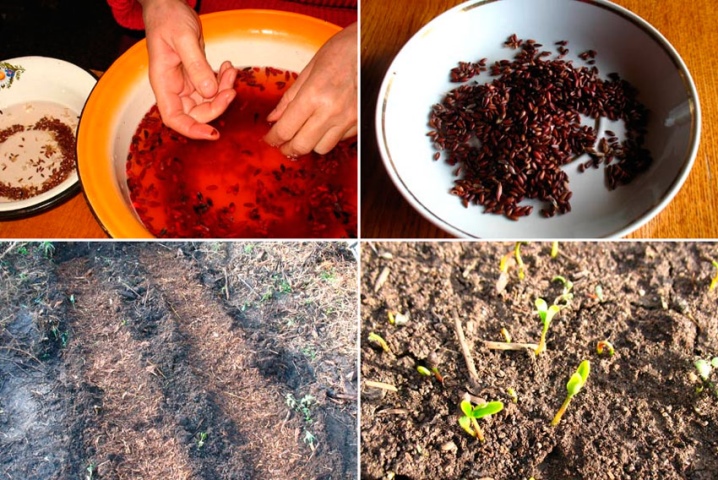
Vegetative propagation occurs by cuttings, layering or division. Cuttings are cut in the last week of June and, having received treatment with growth stimulants, are placed in containers under a plastic or glass "roof". It will take about a year for the barberry to form a reliable root system, after which it can be planted on a permanent site. Work with layering starts in early spring. Healthy annual shoots are fixed to the surface with staples and covered with earth. In this case, it is imperative to control that the crown rises above the ground level. In autumn, Atropurpurea should already form roots.
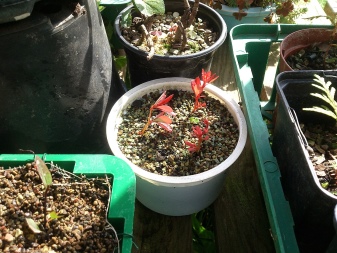
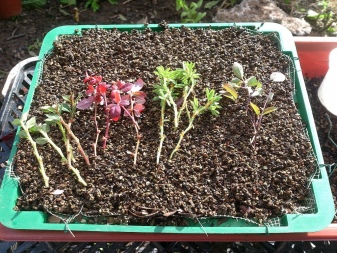
The third way is the division of the bush, which is carried out in the autumn. For the procedure, only those plants are selected that have crossed the five-year-old mark and have a deep root collar. The shrub is carefully dug up and divided either with a sharp shovel or with a knife into the required number of parts. The landing of the resulting divisions is carried out immediately.
How to take care of it properly?
Caring for barberry Thunberg "Atropurpurea" consists of standard components. Irrigation for an adult shrub requires a couple of times a month, but it is better to focus on the condition of the soil and in no case should it dry out. Young barberry needs watering more often - once or twice a week. "Atropurpurea" reacts negatively to the lack of oxygen in the soil, so you will have to periodically loosen the soil in the near-trunk circle. You cannot ignore such an important procedure as the removal of weeds.
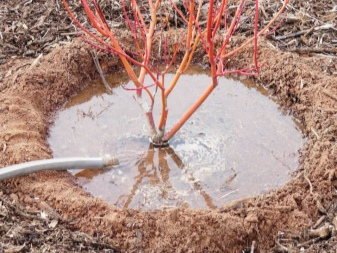

Mulching is carried out using sawdust, peat and other common materials. The layer laid out after irrigation and weeding should be 5 to 7 centimeters high. Fertilization is carried out according to a certain scheme. In spring, immediately after planting, and then every four years, urea is used. The shrub is irrigated with 30 grams of the substance, diluted in 10 liters of water. A bucket of the learned solution is usually spent per square meter of planting.
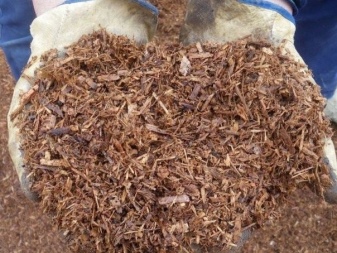
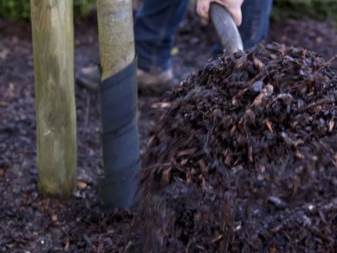
The next feeding is carried out before flowering and at its completion. Usually, a kilogram of rotted manure or humus is used, which is diluted with 3 liters of settled water and kept for three days. Further, having filtered the solution, it is necessary to dilute 1 liter with three liters of water. The bush is watered with this dressing. When the leaf fall ends, you can also feed the barberry. It will be enough to pour 15 grams of superphosphate and 10 grams of potassium sulphide under each shrub. If rain is not expected, then the top dressing can be slightly irrigated to dissolve the substances.

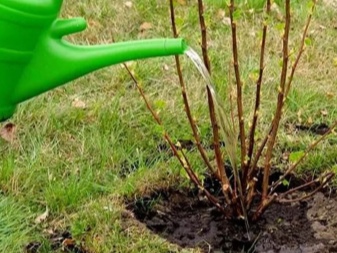
An adult plant does not require any additional protection before winter frosts. If the barberry is young, then you should cover it with burlap. Pruning of Thunberg barberry is carried out in early spring, while the plant is still dormant. As a rule, the shrub is cut with a ball or rectangle necessary to form a hedge. Sanitary cutting is carried out either in early spring or late autumn, freeing the plant from frozen, dried or damaged branches.
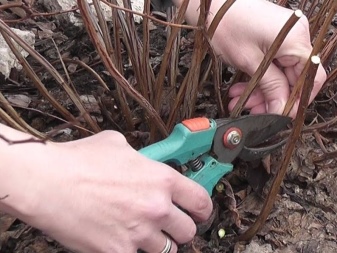
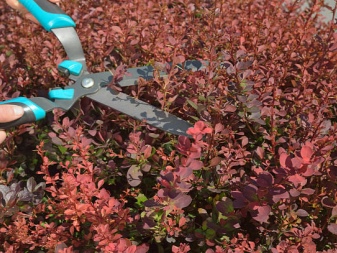
Diseases and pests
On the barberry "Atropurpurea" pests are quite common, for example, aphids, sawflies or moths. Treatment with a soapy solution prepared from 150 grams of laundry soap diluted in a five-liter bucket of water can help. Treatment of shrubs with chlorophos solution or other suitable insecticide will help to achieve the result.
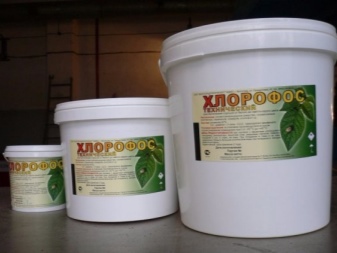

Of the diseases, gardeners are most often faced with bacteriosis, spotting, rust or powdery mildew. The damaged parts of the shrub must be cut off and burned, after which the plant is treated with Bordeaux liquid, colloidal sulfur or a copper-containing solution. As a preventive measure, in the spring, loosening of the trunk circle and cleaning from dried weeds must be carried out.
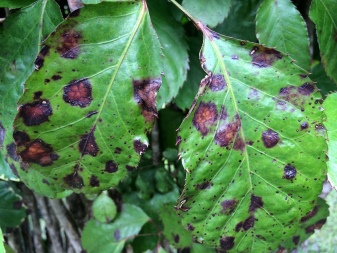
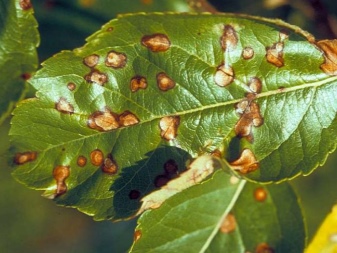
For information on how to properly care for the Thunberg barberry "Atropurpurea", see the next video.



































































The comment was sent successfully.